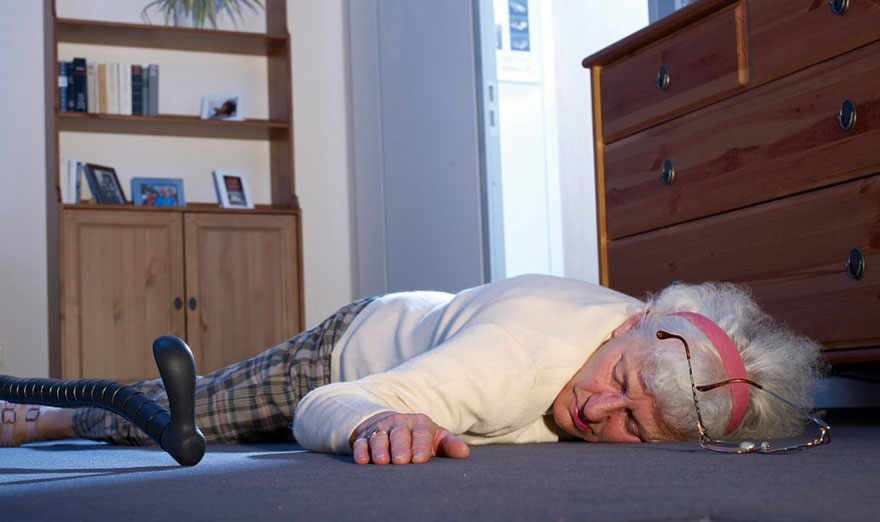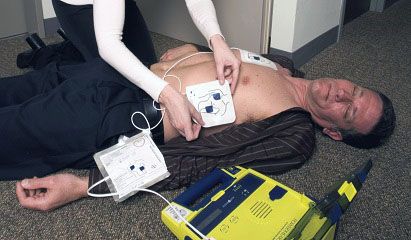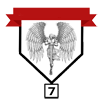Finding an Unconscious Person
- September 25, 2015
- David Miller
- Skills and Drills
- 1 Comment

What do you do when you come across a person lying on the ground unconscious? As you approach them, consider their surroundings and look for any signs of an accident. Look at the person for obvious signs of trauma (broken bones, bleeding, etc.). Ask if they are okay and perhaps apply tactile stimuli to see if they respond. As you kneel down next to them, assess if they are breathing by looking at their chest and perhaps placing your ear next to their mouth. Check for a pulse while you are observing their breathing.
If there is no pulse and they are not breathing, call 911 and start CPR. If an AED (Automatic External Defibrillator) is nearby, use it. You may have seen the old movie scenes of someone being punched in the chest to restart his heart. This can be effective in some cases but detrimental in others. The idea behind this is that the blow stuns (and stops) the ventricular arrhythmia, then hopefully when the heart restarts, it is in normal sinus rhythm. The down side is that some ventricular arrhythmias may be made refractory to the defibrillator after the precordial thump. If no AED is present, go with your gut instincts to decide whether to give the person a wallop. Chest compressions are the next best thing to do. I recently saw a video that suggested singing “Staying Alive” by the Bee Gees and doing compressions with the beat. Whether to give mouth to mouth breaths is up to the person doing the resuscitation. In my opinion, the breaths mainly blow carbon dioxide into the lungs. Not much oxygen is being given by mouth to mouth, so I think that using chest compressions to move the blood around with whatever oxygen remains is the more important part of resuscitation.
 If there is no pulse and they ARE breathing there are a few things to consider. First, people can look like they are breathing when in actuality they have agonal breathing. This looks like a fish out of water who takes a big breath then lets some time go between breaths. This is a reflexive type of breathing and usually means they have either had no heart beat for a while or they have had a catastrophic stroke. Neither is good, so call 911 and start CPR. Second, if it looks like they are breathing normally but have no pulse then a) maybe you aren’t feeling the pulse; b) the pulse is too fast for you to feel; or c) they won’t be breathing like that for long. If someone else is around have them check for a pulse as well to verify. If nobody is available then try other areas to check for a pulse (carotid, radial or femoral arteries). You can even place your ear on the chest to try to hear the heartbeat. All this takes time. When in doubt, call 911 and perform CPR.
If there is no pulse and they ARE breathing there are a few things to consider. First, people can look like they are breathing when in actuality they have agonal breathing. This looks like a fish out of water who takes a big breath then lets some time go between breaths. This is a reflexive type of breathing and usually means they have either had no heart beat for a while or they have had a catastrophic stroke. Neither is good, so call 911 and start CPR. Second, if it looks like they are breathing normally but have no pulse then a) maybe you aren’t feeling the pulse; b) the pulse is too fast for you to feel; or c) they won’t be breathing like that for long. If someone else is around have them check for a pulse as well to verify. If nobody is available then try other areas to check for a pulse (carotid, radial or femoral arteries). You can even place your ear on the chest to try to hear the heartbeat. All this takes time. When in doubt, call 911 and perform CPR.
But what happens when there is a pulse AND the patient is breathing? Now what? If you see them go unconscious, then you have a minute to see if they wake up. In that time you can check for medical alert bracelets or search for ID. If the syncope (passing out) is unwitnessed, I would recommend calling 911 before further assessing the person. Trauma, narcotics, alcohol, seizures and diabetes are the most likely causes for them to be found unconscious. Of these, alcohol may be the most apparent because of the smell. Be cautious in cases of trauma to stabilize or minimize cervical spine movement. Seizures may not necessarily cause loss of bladder or bowel control but the presence of incontinence may guide you in that direction. Diabetics can be unconscious due to low or high blood sugars. They will die faster if their sugar is low, so know the signs of hypoglycemia. Using a glucose gel or equivalent under the tongue or between the cheek and gums is important to avoid aspiration. If the sugar is high you may smell a fruity smell (acetone) on their breath indicative of diabetic ketoacidosis. The smell is not always present but is helpful if it is recognized.
This is not meant to be a comprehensive resource but rather demonstrates my thought process when I encounter an unconscious person. Try to observe the surroundings and see if there are clues as you approach the person. Check breathing and circulation, then go through the process of assessing and supporting the person until paramedics arrive or the patient regains consciousness.
Dr. David Miller, MD

very helpful, I’ve had more experience than I care to admit dealing with alcohol related unconsciousness while working security, always get a little stressed even when I know the person is just wasted… it seems you never know what other issues they may have.